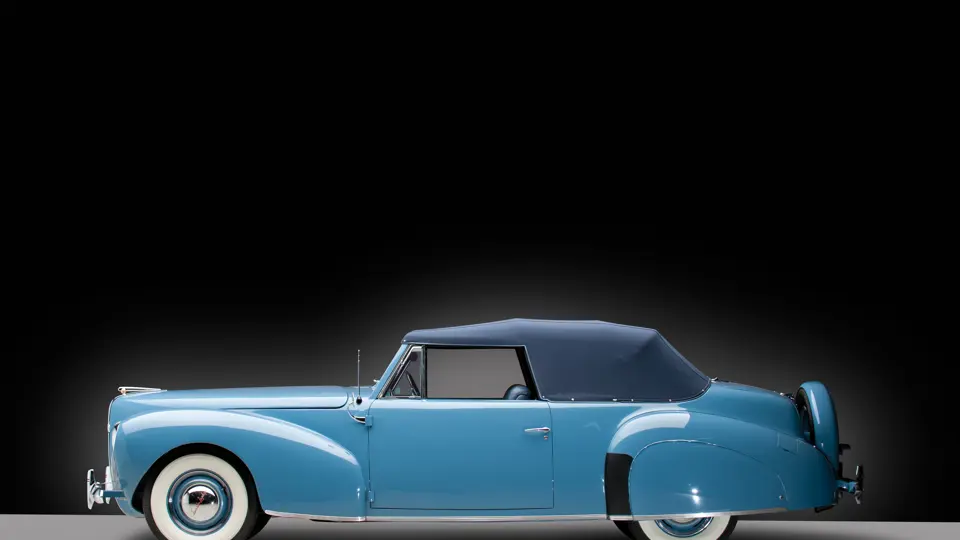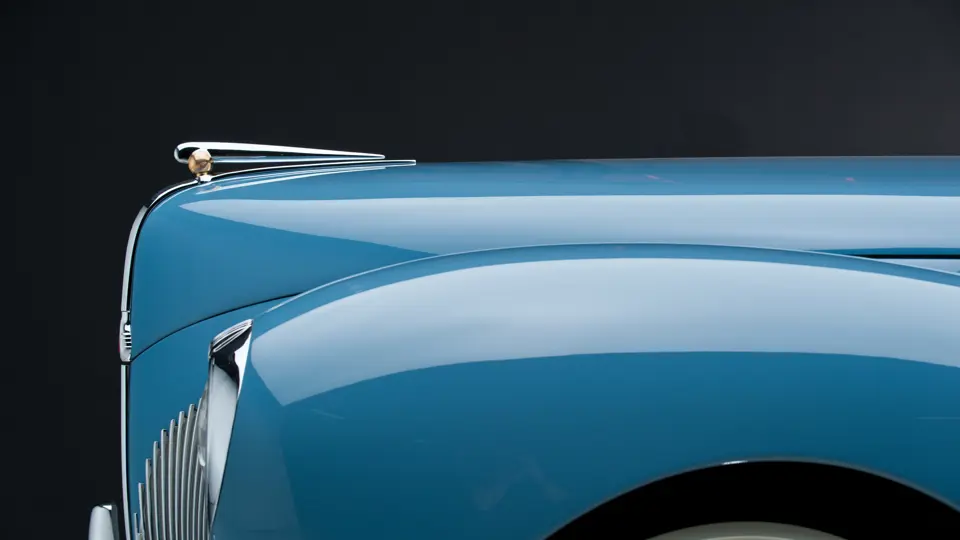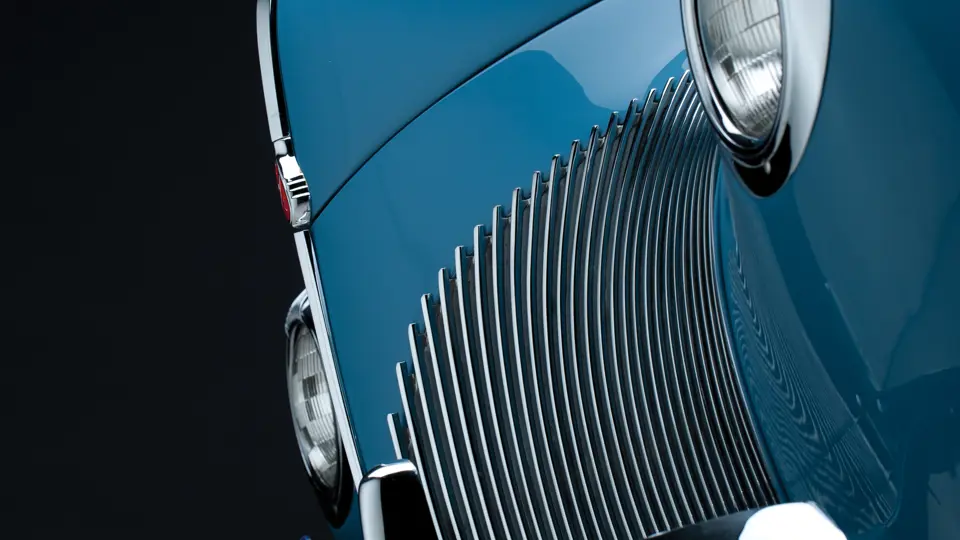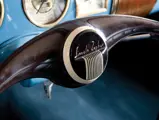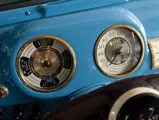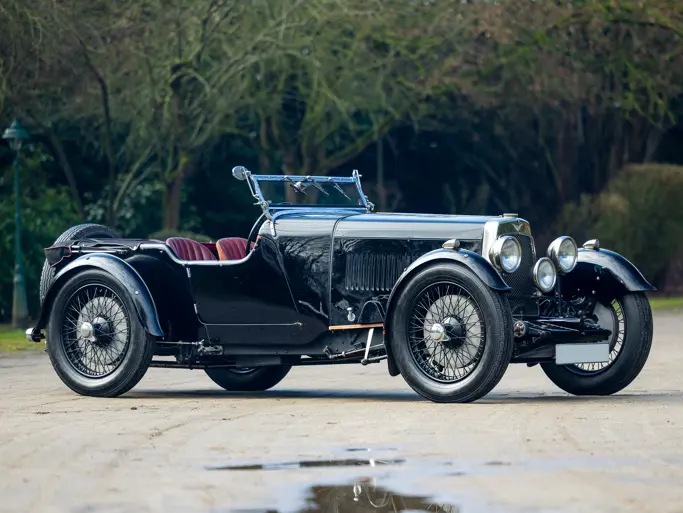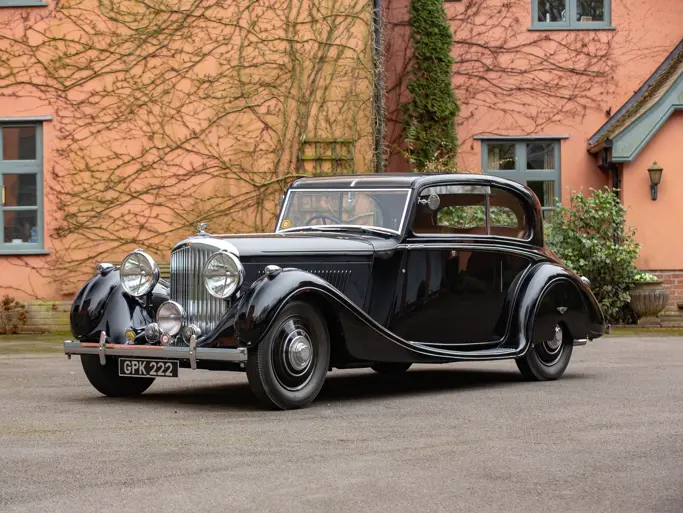MODEL 06H-76. 120 bhp, 292 cu. in. L-head V-12 engine, three-speed manual transmission, solid front axle and live rear axle with transverse semi-elliptic leaf springs, and four-wheel hydraulic drum brakes. Wheelbase: 125"
The famed Lincoln Continental had its origins in a “special Lincoln-Zephyr” built for Edsel Ford in 1939. Based on the Zephyr, it had a 12-inch longer nose and bustle-shaped hindquarters with an exposed spare tire. The car was delivered to Mr. Ford in Florida, on March 1, 1939, and drew so much attention and acclaim that work was immediately started on a production version, which was launched that autumn as a 1940 model.
This 1940 Lincoln Continental, in the unlikely combination of powder blue over matching blue leather, has an interesting history. The factory record shows it to have been completed on March 4, 1940. In the more recent past, it has been owned by Dillard Harwell and Bruce Eib, the latter in the mid-1960s. Eib sold it to John Quirk, a former Navy pilot, prolific writer, owner-publisher of Horses magazine, and minority owner of the San Diego Chargers football team.
Quirk owned the car for a number of years but eventually came to the conclusion that he would never restore it. In 1995, he sold it to Pennsylvania collector Gene Epstein. Epstein was able to locate an interior from a Continental, body #291, which had been stored in pieces. Surprisingly, the interior was blue, a color not regularly available on Continentals until 1941. Research on body #291 showed it to have been, according to the assembly record, “a duplicate of motor H-100125, Paul Whiteman’s Continental,” although the record for H-100125, body #175, does not actually mention Whiteman. In any case, Epstein was enamored with the blue color and restored body #150 in the image of #291, which was itself patterned on #175. Paul Whiteman, of course, was the noted American bandleader and orchestral director who was often known as the “King of Jazz.”
Aptly and affectionately referred to as “Rhapsody in Blue,” the car is very handsome in its light blue hue. The top is dark blue canvas with grey piping, and the seats have the matching light blue that led Epstein to recreate the masterpiece. The restoration is older now and shows some aging, but the combination is still terrific. The instrument panel is finished in the same light blue, and the carpet just a shade darker. The odometer reads 440 miles, presumably the mileage accumulated since restoration.
The brightwork is quite presentable with minor blemishes visible, and the engine compartment is nicely detailed as well; the aluminum cylinder heads and intake manifold are polished, as on all early Continentals. The car has a fresh-air heater and a dashboard-mounted radio and clock. The trunk is lined with tan fabric and contains a boot cover, jack, and tool kit.
The word “tribute” is much over-used in the automotive world, but it aptly describes this car, an accurate recreation of a car known but lost to history. Irrespective of its stunning color combination, it is of course a Lincoln Continental through and through—an American luxury car with no equal.




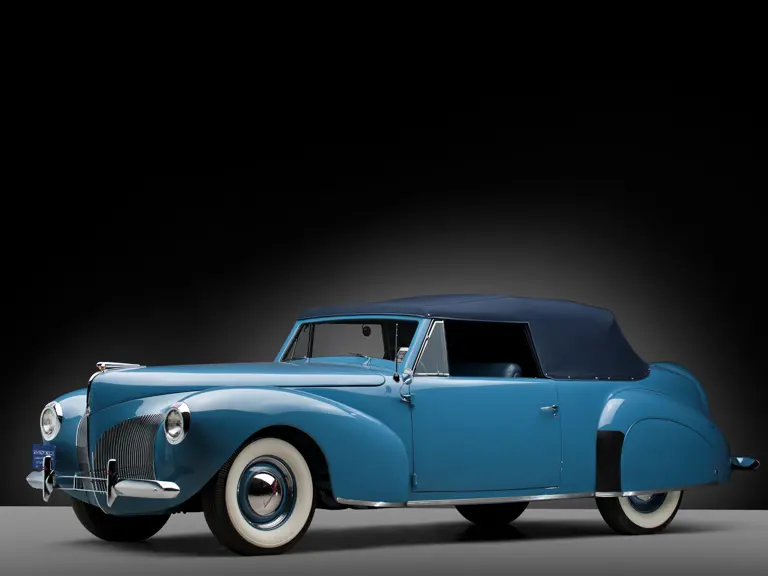
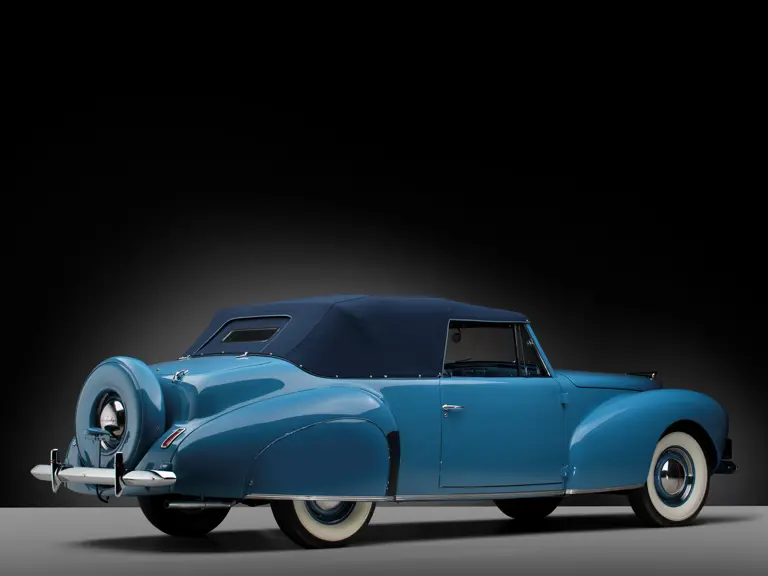
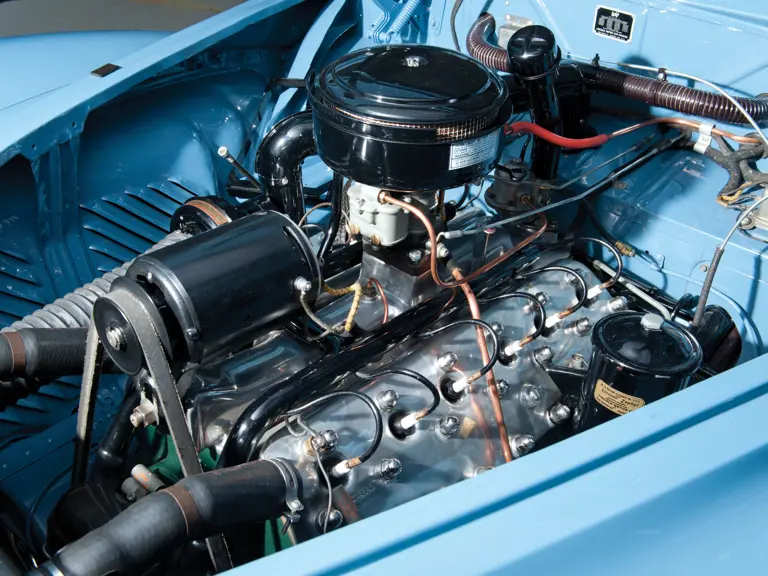
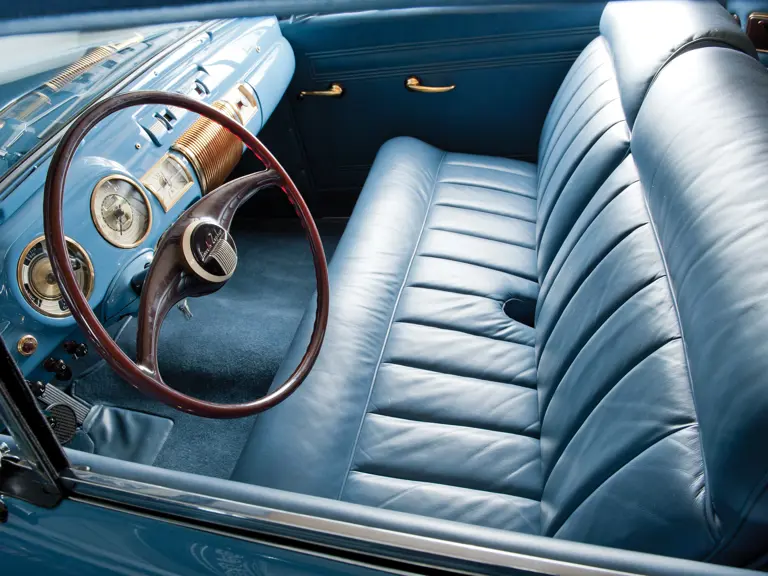

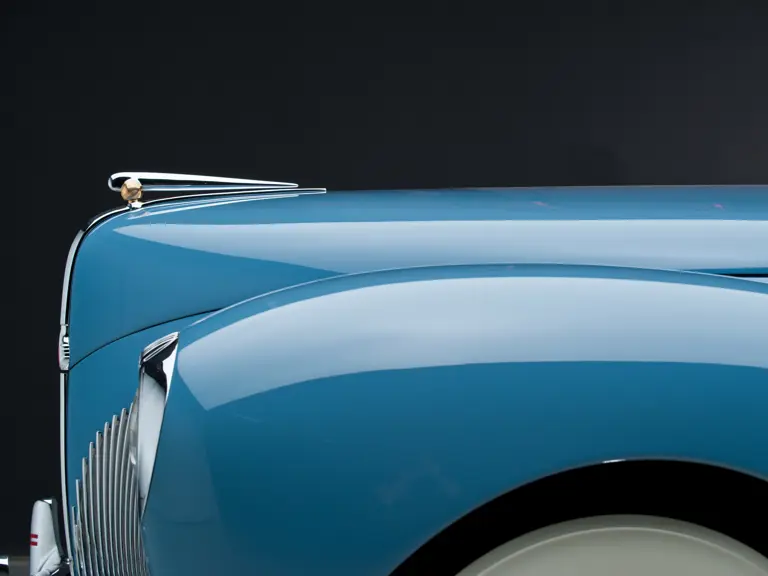

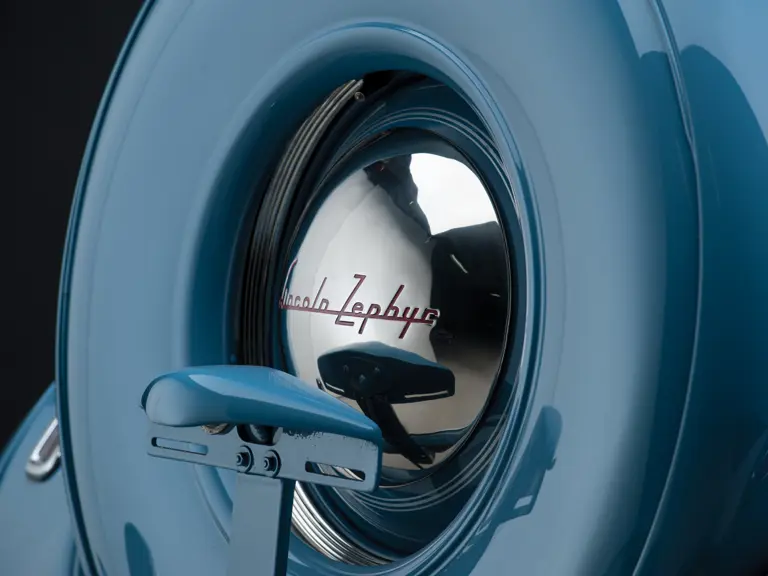

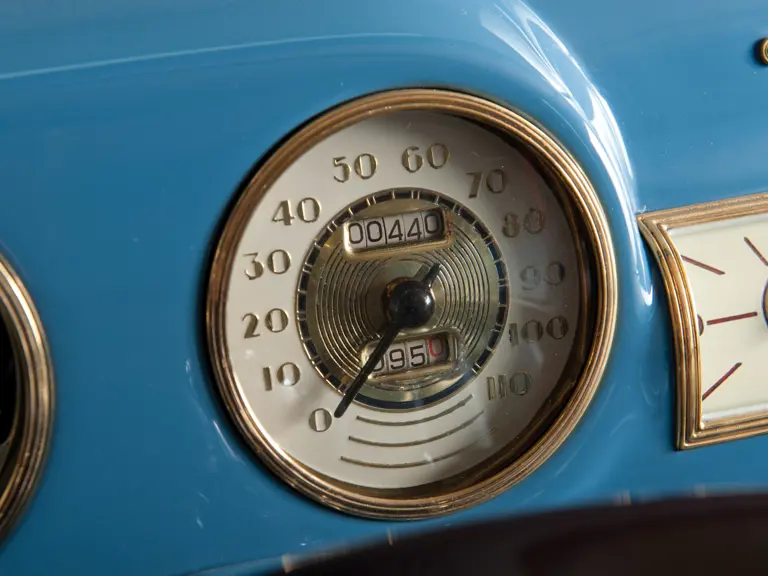
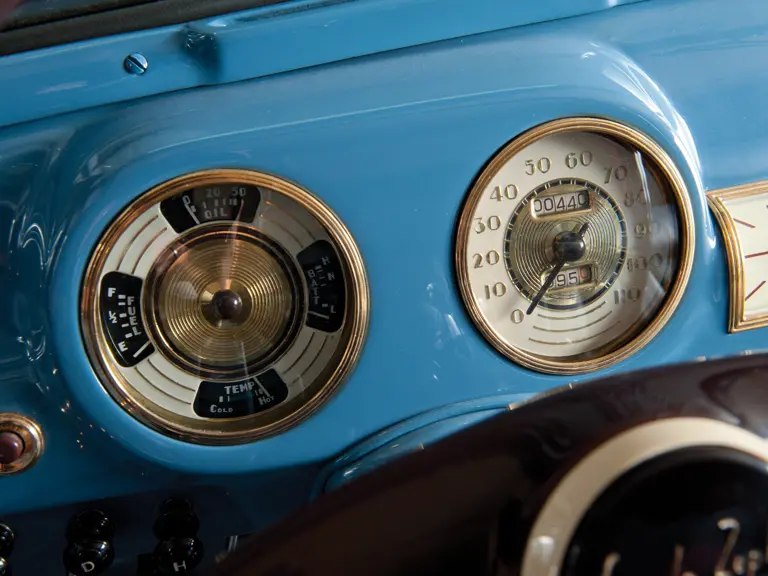
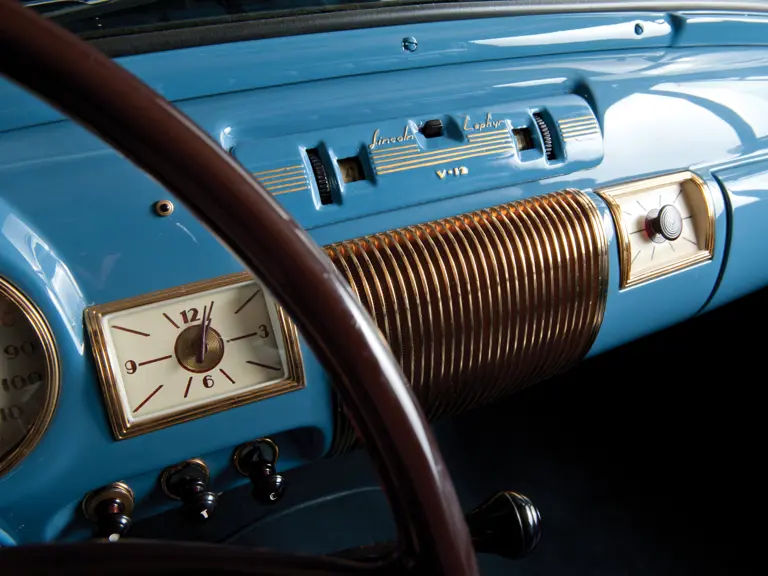

 | Hampton, New Hampshire
| Hampton, New Hampshire
